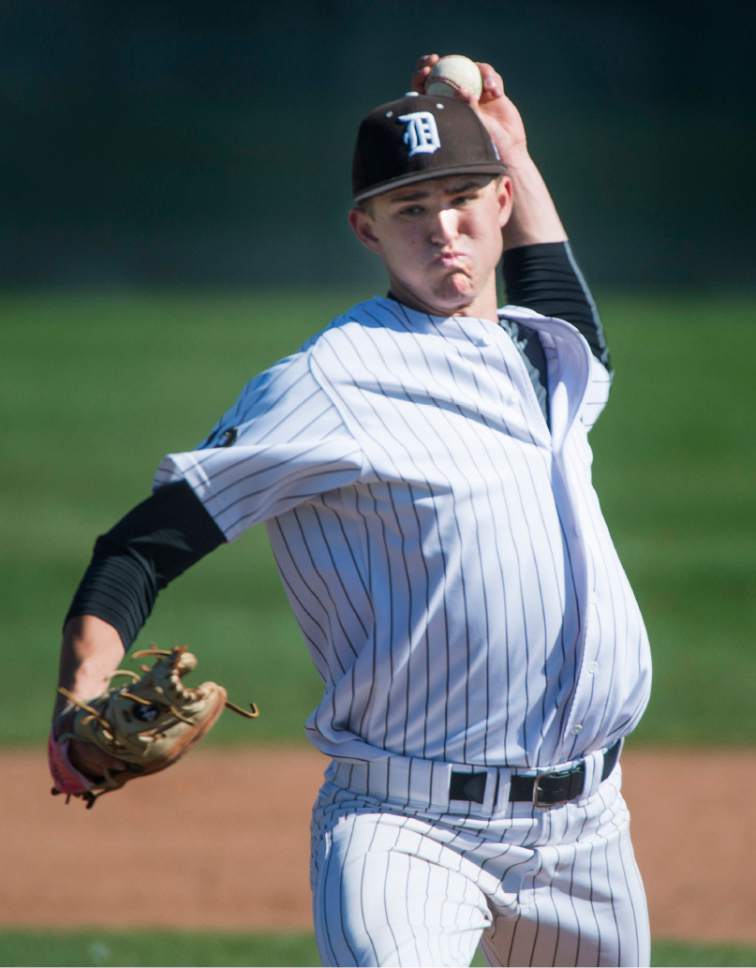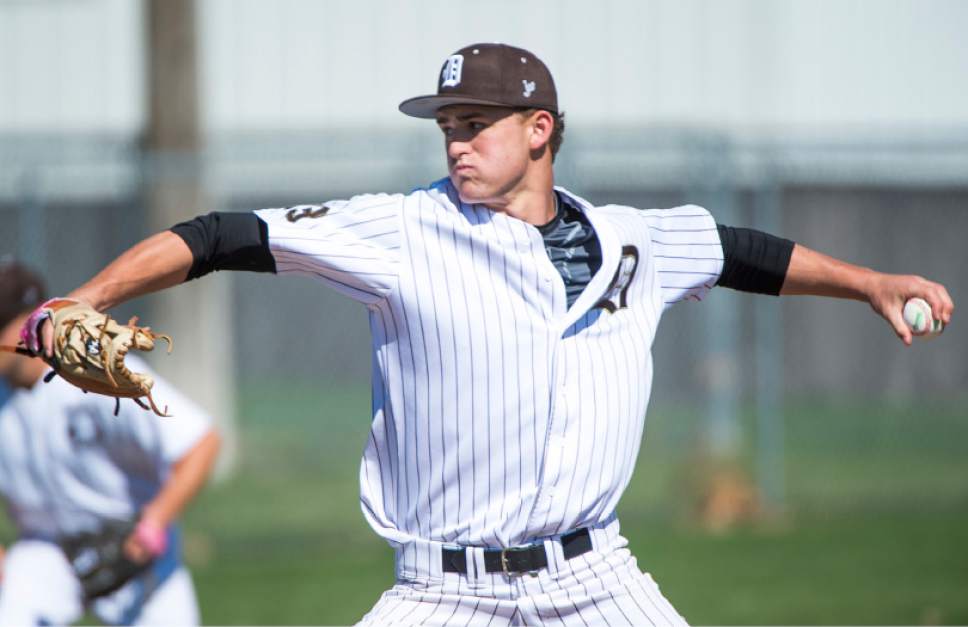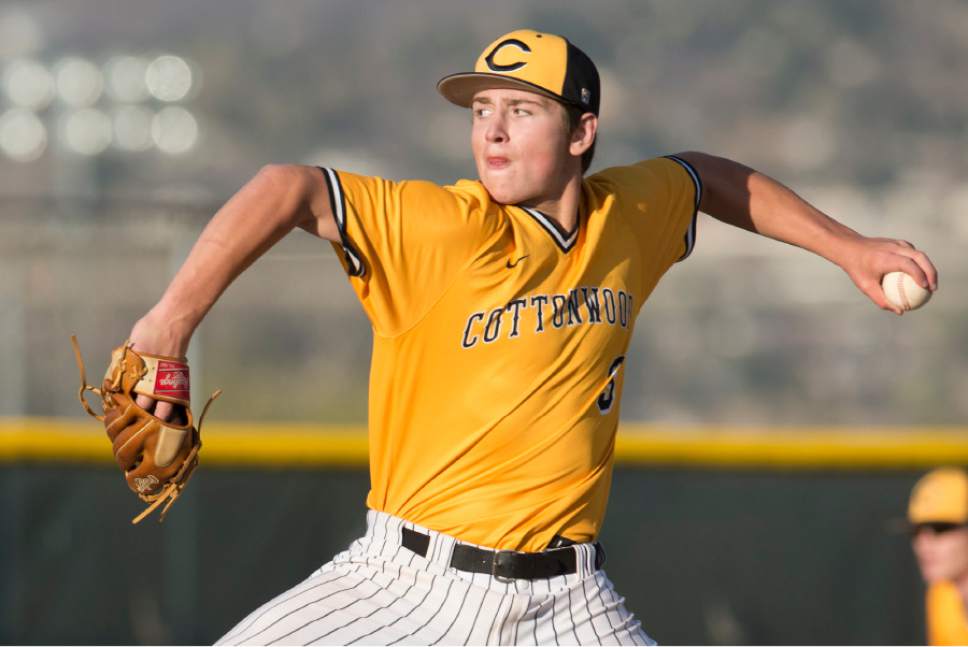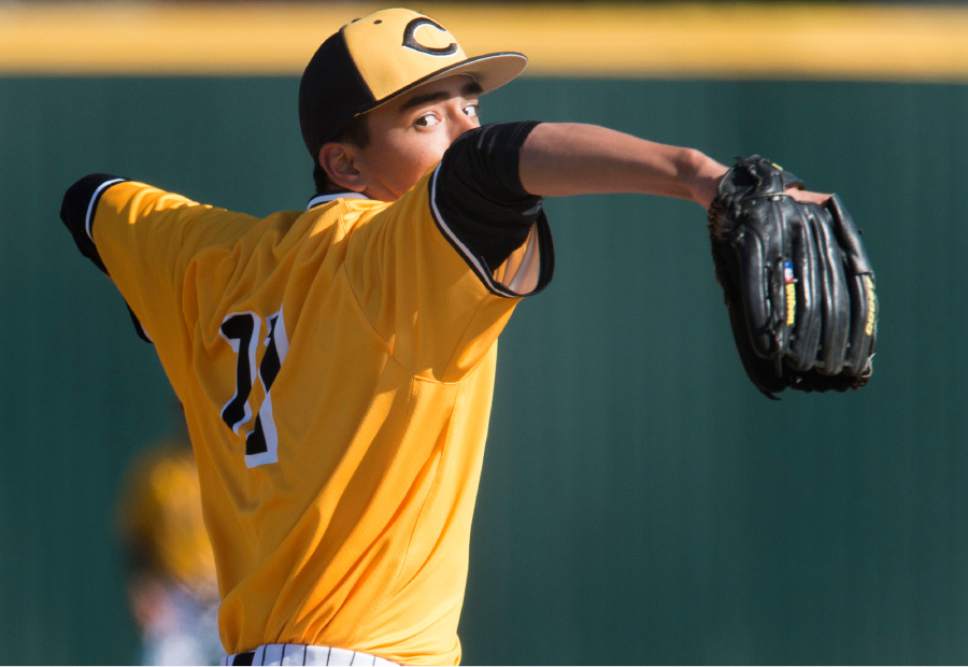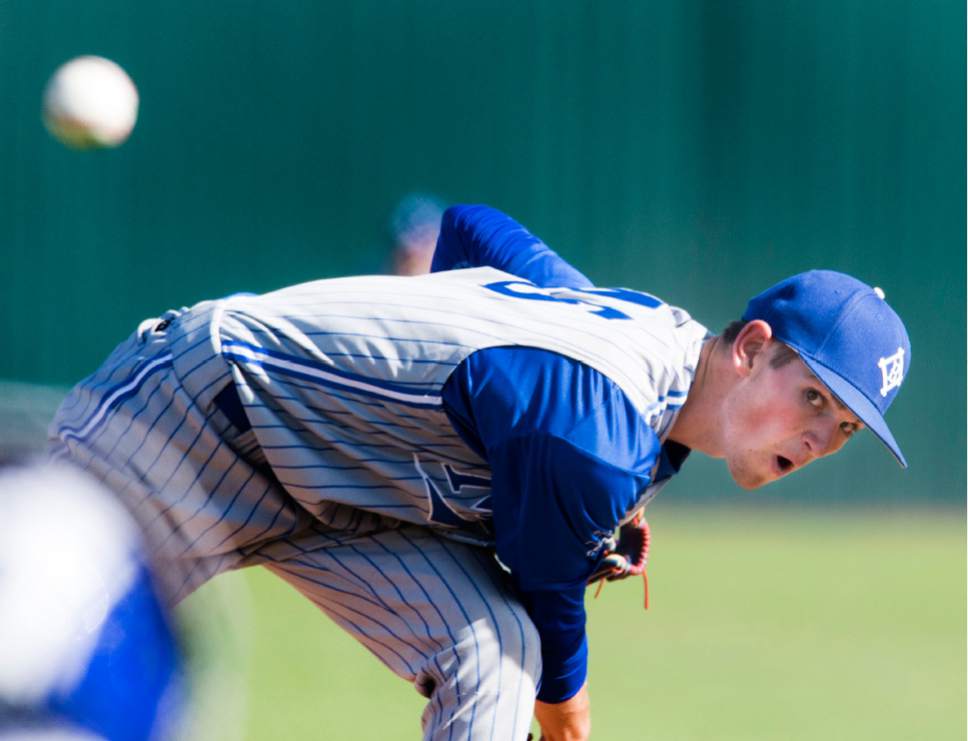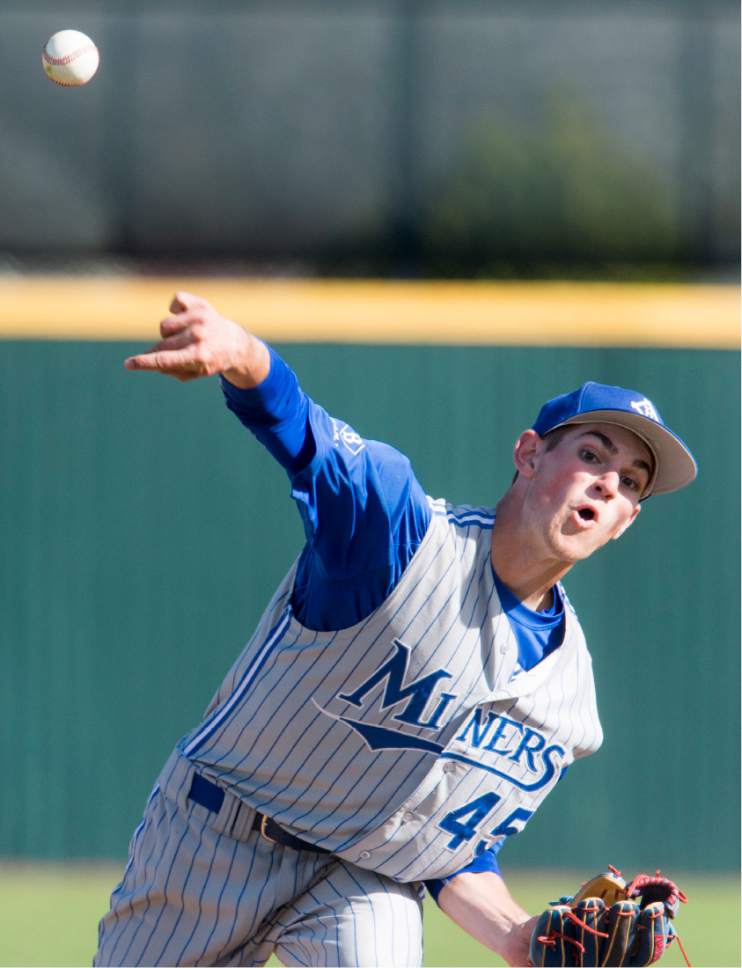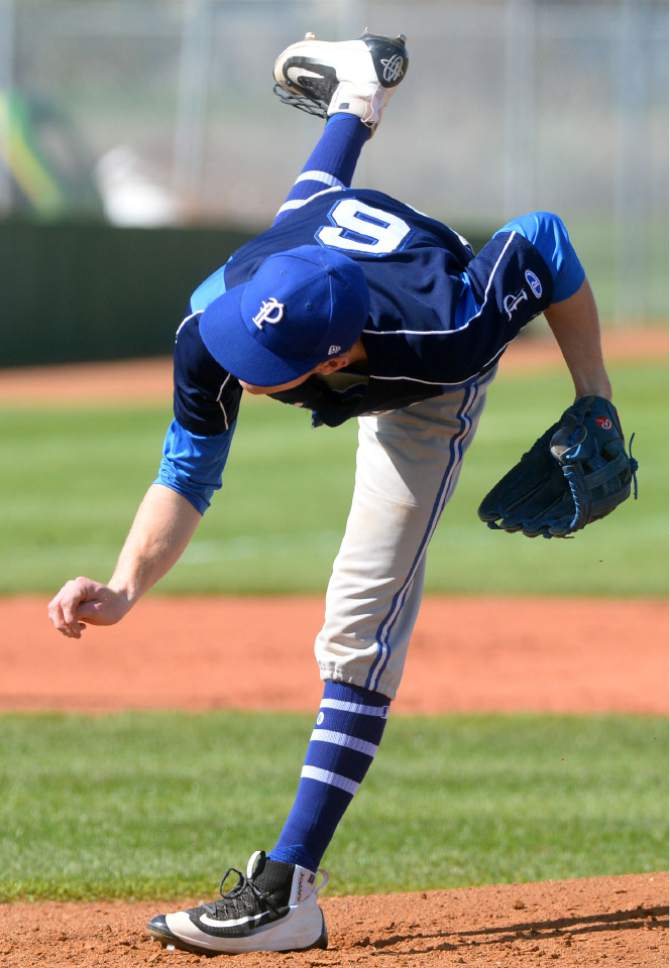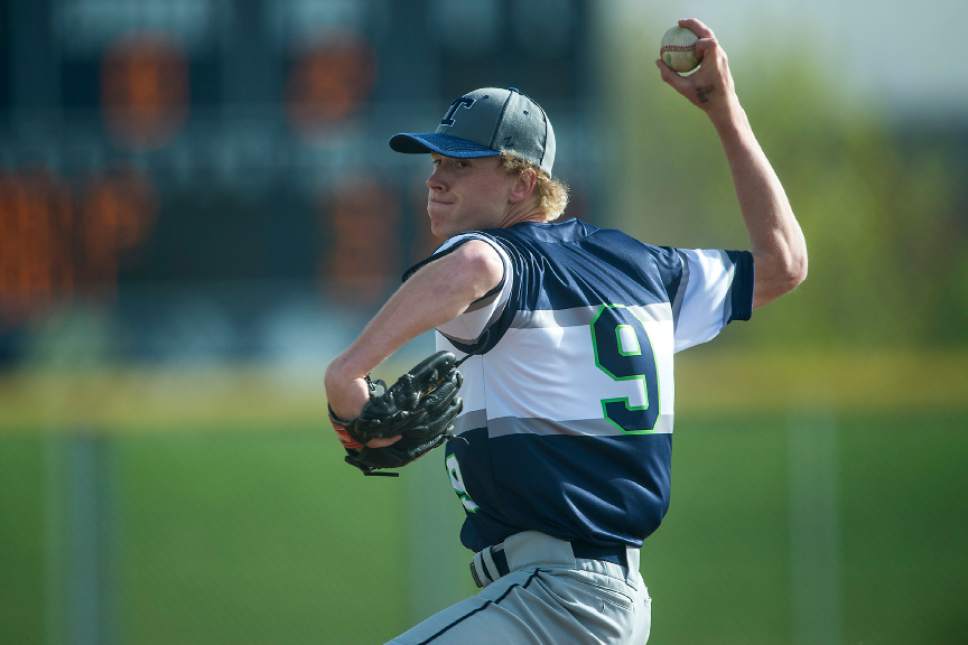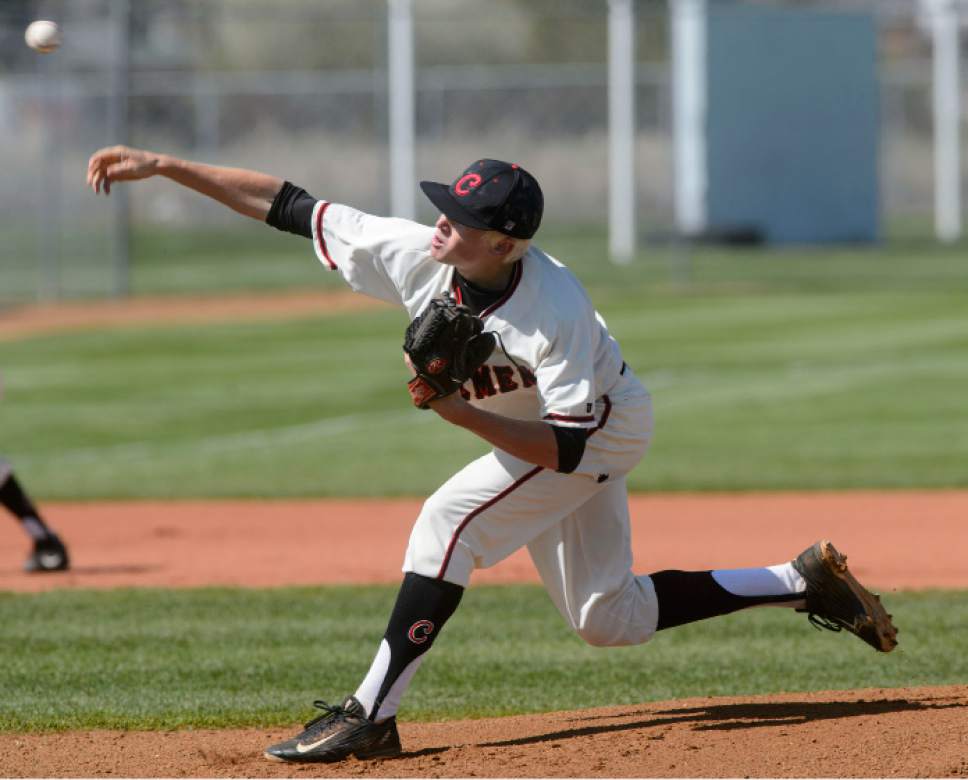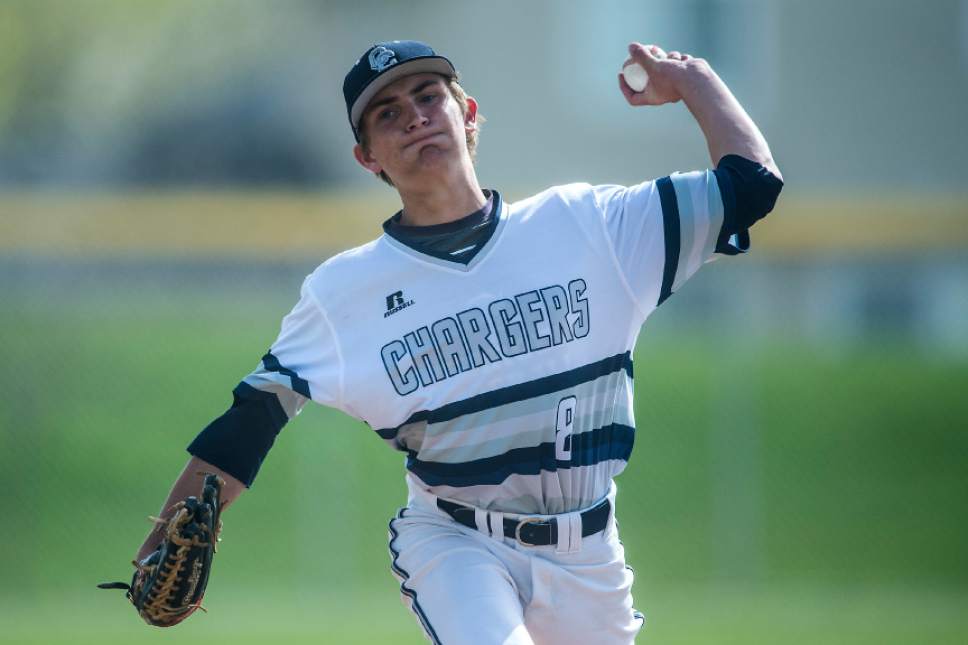This is an archived article that was published on sltrib.com in 2017, and information in the article may be outdated. It is provided only for personal research purposes and may not be reprinted.
Every once in a while, a new rule in baseball will change the way coaches manage their personnel.
The change may not be obvious to casual fans or even all that important to managers early in the season, but the postseason suddenly brings the rule to prominence.
Such is the case this year for Utah high school teams with pitch-count limits and required rest based on those pitch counts taking effect.
"State tournament is going to be interesting. I don't know, it'll be our first experience with it," Cottonwood coach Jason Crawford said. "Guys throwing on short rest, everybody's going to have to manage their arms different. And gamble — taking guys out early if they want them to come back."
By "arms," Crawford means those charged with the pitching duties.
The limits have been in effect all season. If a player throws between 86 and 110 pitches, he must have three days of rest before he's able to take the mound again.
Throw between 61 and 85 pitches, and the required rest is two days. It's one day for 36 to 60 pitches.
"It was a directive from the national federation, where they changed it from 14 innings per week to a pitch count," said Jeff Cluff, assistant director with the Utah High School Activities Association. "Most of that came from USA Baseball and Major League Baseball from their sports medicine committee as a safety concern for kids.
"They allowed the state associations the ability to enact whatever pitch count they wanted. It wasn't a directive from the NFHS [National Federation of State High School Associations] to say, 'Hey, here's the pitch-count chart you need to use.' It was, 'Hey, you have to have a pitch count and you need to let us know what it is.'"
Cluff said the current pitch-count guidelines were formulated through consultation with other state associations as well as the Utah Baseball Coaches Association and athletic directors around the state.
Pitch-count restrictions weren't terribly constraining — or even remembered at times — early in the season as coaches got used to the new rule.
"We've had to send reminders in our GameChanger [a computer application commonly used to input statistics] because the first week we forgot about it. We had to make sure we were on point," Crawford said. "But we've only had two guys go over 100 this year. Typically we don't push that threshhold until the state tournament."
One magic number surely is starting to embed itself into coaches' minds.
If a pitcher exceeds 110 pitches in a game, the penalty is a two-day suspension for the coach. The only exception is if a pitcher reaches the 110 mark during an at-bat, he is allowed to finish pitching to that batter.
A violation of the 110-pitch limit in the postseason means a forfeiture of the game by the offending squad.
"It hasn't really affected us yet. Ask me again in two weeks and I might have a different answer for you," Park City coach David Feasler said.
Crawford saw the restrictions come into play last week in his team's series with Jordan.
"Game 1 against Jordan on Tuesday, our starting pitcher [Hayden Rosenkrantz] is going into the seventh at pitch 90. I told them, 'At pitch 100, I need to know,'" Crawford said. "Then in Thursday's game, their pitcher [Gage Edwards] was on pitch 110 when he got the last out of the game."
The home team is responsible for keeping track of pitch counts during the regular season. The UHSAA will keep track in the playoffs.
Crawford said his team uses three methods right now — GameChanger, a pitcher's chart in the dugout and a small scoreboard in the press box — to count the pitches.
While strategies will have to change for the coaches, the UHSAA, mindful of the problems the new regulations might cause, have altered the structure of the playoffs for the larger schools.
"We had to change the format of our 4A and 5A tournaments. We had to move the games back one day and count for an extra day off," Cluff said. "If you come in and play those quarterfinal games on Tuesday night, if you won, the starter that throws that night couldn't come back and throw on Friday.
"In the old rule [innings limits instead fo pitch counts], he could throw seven innings on Tuesday and seven on Friday."
Cluff said that the Class 4A and 5A games that in recent years were played Monday have been moved two days earlier to Saturday. Likewise, the former Tuesday contests have been moved to Monday, and the tournaments now have a scheduled day off Thursday.
"It does affect bounce-back time in the playoffs," said Stansbury coach Ray Clinton, whose team will vie for a championship in the Class 3A state tournament. "A lot of aces would throw that Thursday game and then sometimes come back and pitch the championship game on Saturday.
"Now, you're not going to be able to do it." —
Required rest
The UHSAA instituted new rest requirements for pitchers this season. They are based on the number of pitches a player throws in a game, which replaces the former requirements that were based on innings pitched.
Pitches • Required rest
86 to 100 • three days
61 to 85 • two days
36 to 60 • one day


